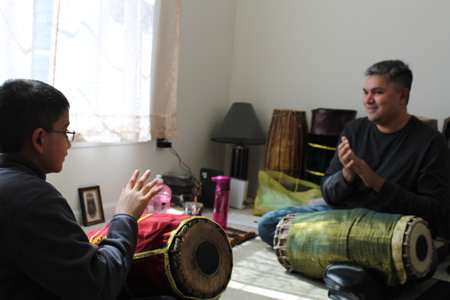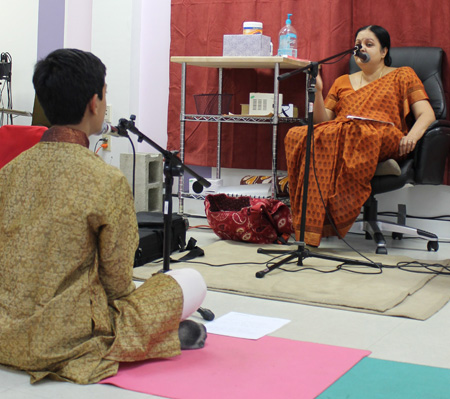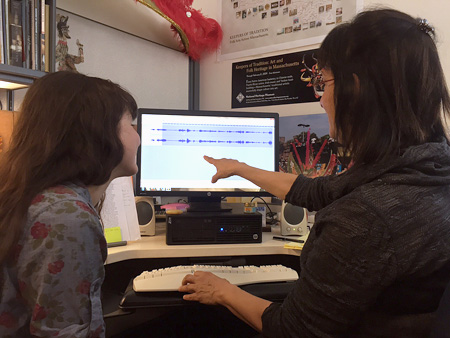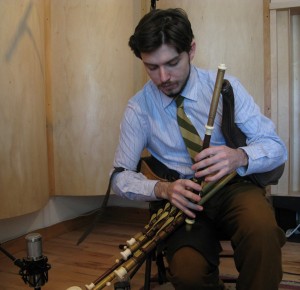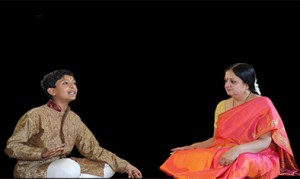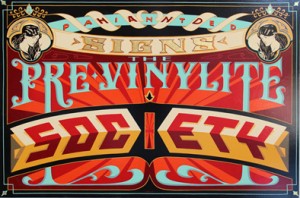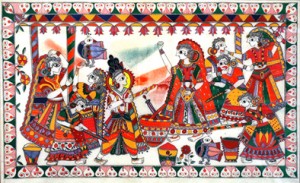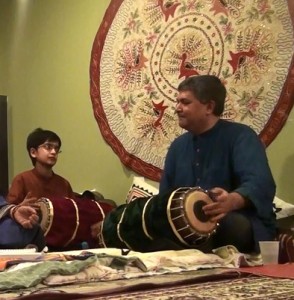Every once in awhile, the Folk Arts & Heritage Program welcomes an intern. It’s a win-win situation. The intern gets exposed to the work of a public folklorist (doing fieldwork, managing grants, and archiving field collected materials). The public folklorist gets help with transcribing recorded interviews and the opportunity to mentor the next generation. This spring, that intern has been Hampshire College sophomore and fiddler extraordinaire, Tatiana Hargreaves.
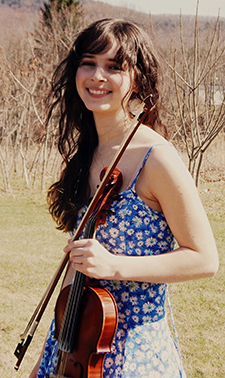 Here is her guest blog post about her experience:
Here is her guest blog post about her experience:
I started my internship after returning from the Dosti Music Project in March. As preparation, I read Maggie’s book Keepers of Tradition and was immediately struck by the vast array of traditions documented in it. I had no idea Massachusetts held so much culture and so many traditions. Everything in the book fascinated me, but knowing I would be leaving for tour in May, we decided to focus on the three music apprenticeships: South Indian mridangam, Carnatic vocals, and Irish Uilleann piping. I was especially excited about the two South Indian apprenticeships as a way to follow up my experience at Dosti. Our role was to document the progress of the apprenticeships by conducting site visits to observe a lesson and ask follow-up questions about the apprenticeship.
Our first site visit was with mridangam player Gaurish Chandrashekhar at his house in South Grafton.
We all crammed into a small room with Gaurish and his apprentice Kaasinath Balagurunath in the middle, and Kaasinath’s dad scrunched in the corner filming on his iPhone. Having grown up with Western classical and oldtime music, I expected the lesson to start similarly, that is, with a warm-up. However, as soon as Kaasinath sat down for the lesson, they started at full speed, right where they left off at the last week: how to subdivide a 10-beat phrase into a 16-beat cycle. The lesson kept a very fast pace, with Gaurish having Kaasinath figure out multiple ways to put the 10-beats into the sixteen.
Towards the end of the lesson, we were free to ask questions. I led the interview, but Maggie’s last question got the most powerful answer. She asked Gaurish what role music played in his life, to which he responded, “People have immigrated from India and here and now they are Americans. . . your heritage, your culture, the grass, the roots are somewhere else. Right? So how do you keep that connection going? So a natural aspect is music or dance or food, right? Those are the three things that we have. Or clothes, obviously. So music has become a very significant part of it, and dance even more so, because it tells a story. So you have to learn about the stories. . . so you can bring out the correct expression. The same thing with musical instruments. You’re lyrically expressing what happened at a period of time . . . You’re not just presenting what is taught you.”
Hearing Gaurish say this made me think about all of the kids learning western classical music in schools. How do they connect with the story and history of that music? Or do they at all? At 13, Kaasinath is not only learning music, but a whole history. When I was learning western classical music at that age, no one stressed the importance of the history and culture of the music we were playing. As a result, I wasn’t interested in where it came from or why it was played. So where did the importance of history and culture go in western music education?
Our next site visit was with Tara Bangalore and her vocal apprentice Pratik Bharadwaj. Tara also teaches Carnatic violin, so Maggie and I (both fiddlers) came an hour early to get an introduction to Carnatic violin playing. Although Maggie and I both have a lot of training in other musical traditions, we were complete beginners with Tara. During Pratik’s lesson, Tara taught him the beginning of a new piece by ear, going over it phrase by phrase, and then had him perform a pallavi for us. Pallavi is one of the most complex song performances in Carnatic music as it features several different ways of improvising, from alapane, a slow improvised section, to tanam a rhythmic improvised section, to pallavi, a melodic refrain that has extremely complex improvisation rules. Pratik went through each section, only hesitating once during the pallavi, which he learned at the last lesson.
After the lesson, we asked Tara and Pratik some questions and Tara said many things that could apply to any musician, but one thing she said particularly jumped out at me as something a student in any area should consider. “When you’re. . . building yourself into a musician, you have to pay attention to balance. Is your music balanced? Is it too stormy? Does it have enough melody? Does it have all [the] technical stuff?”
“There’s a lot of music out there in the world today, a lot of interpretations, a lot of brilliance, no question, but sometimes in the middle of all that, the simple melody, the simple music that made Carnatic music what it was, that gave it the classicism, it always runs the danger of slipping out somewhere.”
So where am I going with all of this? As a musician, this work is eye-opening and inspiring. As a human being, it teaches you about other human beings and the world we live in. Having the chance to go out into the world and learn about people and the art they make and why they do it, it teaches you so much more than just the how or why. It gets you questioning deeper into your own music, your own life, your own culture, and your own story.


